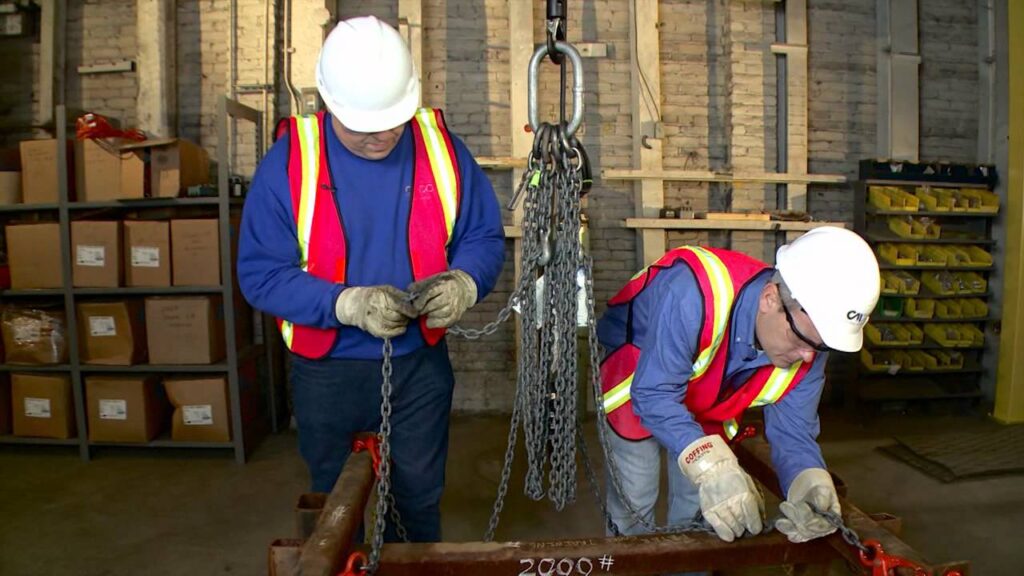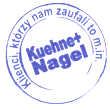Course for hook - syngalist
We provide training for the position of hook-signaller. We prepare course participants to handle equipment properly and to cooperate with operators by preparing loads to be moved using material handling equipment such as cranes, overhead cranes or hoists.
What does a hook-signaller do?
The position of hook tackler (also known as hookman for short) involves assisting the operators of lifting equipment. The hook tackler must be familiar with the applicable rules for handling hooks and slings and know how to secure loads prior to transport. It is his or her task to make the best possible use of the capacity of the lifting equipment and to prepare the load so that the operator can move it safely and efficiently to the right place.
Responsibilities of the hooker
When a crane or other lifting device is transporting material, the hookman must give the appropriate signals to the operator (the only exception to this is the so-called emergency stop, where the signal can be given by any employee). The operator and the hookman must therefore work in close cooperation with each other. The ability to use the hand signal system is the basis for the smooth running of the work and, in addition, ensures safe conditions. The person in this position must therefore know what types of signals are used for the various pieces of equipment. In summary, a hookman deals with:
- load hooking,
- its detachment,
- observation of the load during transport,
- signal transmission,
- determining the transport route,
- stopping work in the event of danger.

Requirements before the course
Only people can take part in the course:
- adults,
- with at least primary education,
- having an appropriate medical certificate.
Course flow
The Hookmaker course is a guarantee that you will acquire the qualifications needed to work as a hookmaker-signaller. It is an opportunity to acquire the theoretical and practical knowledge needed to work in the profession. We adapt all the dates to suit the participants of the course, by holding classes in several hourly modes. Practical classes take place on a dedicated site. The theoretical classes consist, among other things, of tests in preparation for the examination. The course programme includes:
- learning about current health and safety regulations and the operation of lifting equipment slings,
- technical characteristics of the equipment supported,
- assessing the condition of machinery before starting work,
- knowledge of potential risks,
- familiarise yourself with cargo securing techniques,
- familiarisation with the signalling system.
Post-course examination
Passing a training course is not sufficient to obtain a licence. In order to do so, it is still necessary to pass a state examination, before a competent commission. This consists of two parts, testing theoretical and practical knowledge. Passing it means being able to work in your profession.

Hooker's work
The person completing our training will have all the practical skills and theoretical knowledge needed to work as a hookman. The qualifications acquired will enable him or her to work on construction sites, in warehouses and building material depots. This equates to gaining the opportunity to work in a high-demand position.
In addition, our training is geared towards obtaining authorisations that guarantee work not only in Poland, but also throughout the European Union, the United Kingdom and Norway. We prepare you for conditions on land and on water.
Our courses have been developed in accordance with ISO 15513, OMHEC, LOLER 98 and PUWER standards. We offer first and second degree preparation.
Questions and Answers
What is the profession of hook-signaller?
The hookman is concerned with securing the load and communicating with the crane or crane operator to move the materials safely.
What are the requirements for a potential participant?
The basic requirements are: being of legal age, having at least a primary school education and having a proper medical certificate.
Where can you work after the course?
After training and certification, jobs can be found on construction sites, in warehouses or even in ports throughout Poland, the European Union and the United Kingdom and Norway.

































